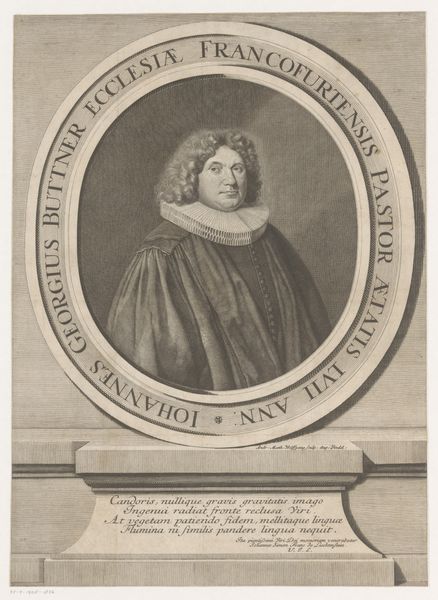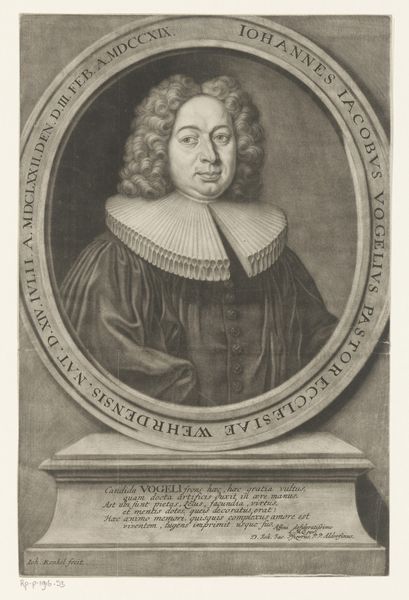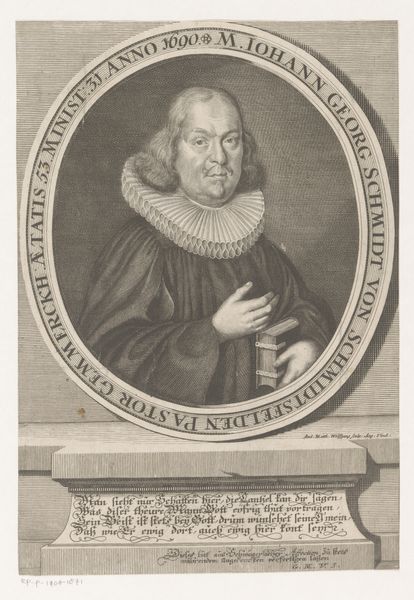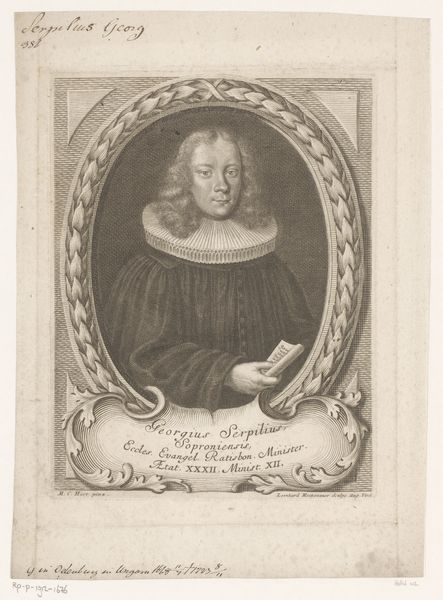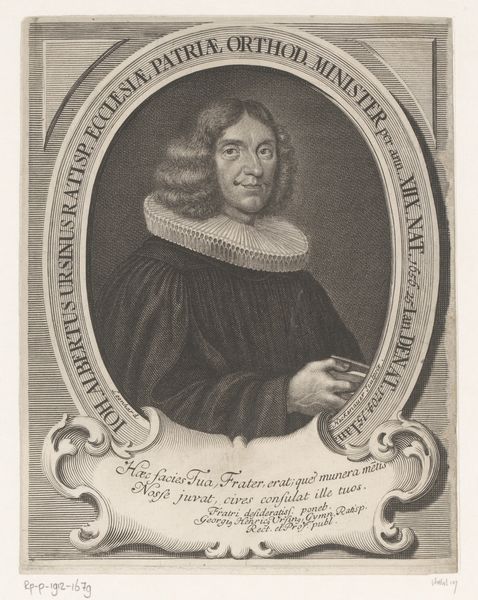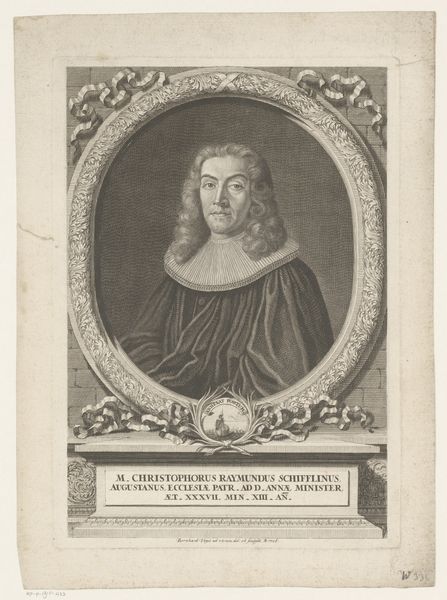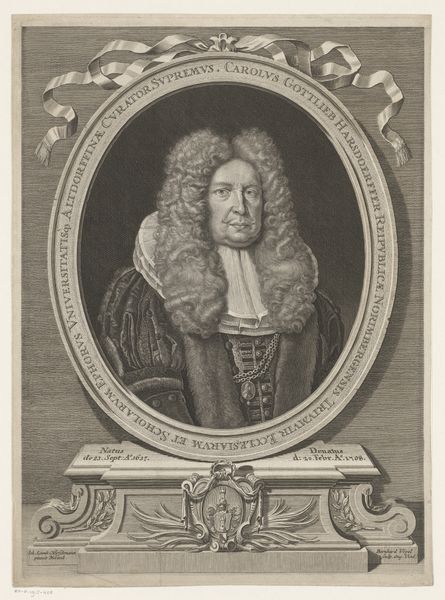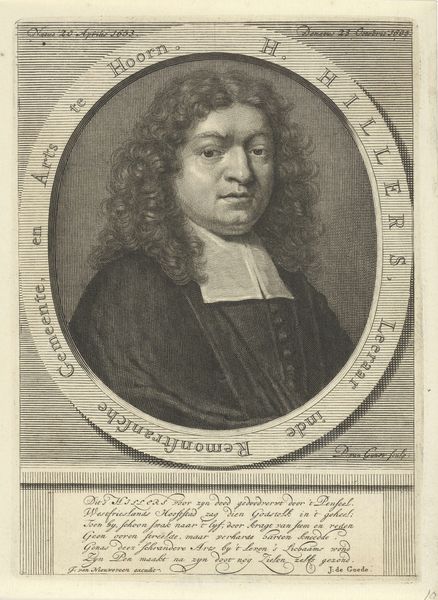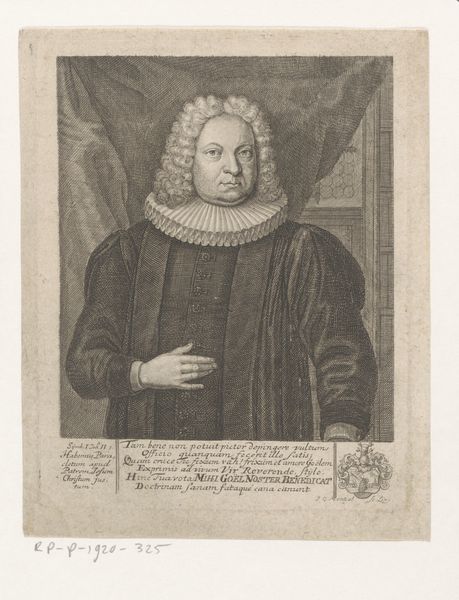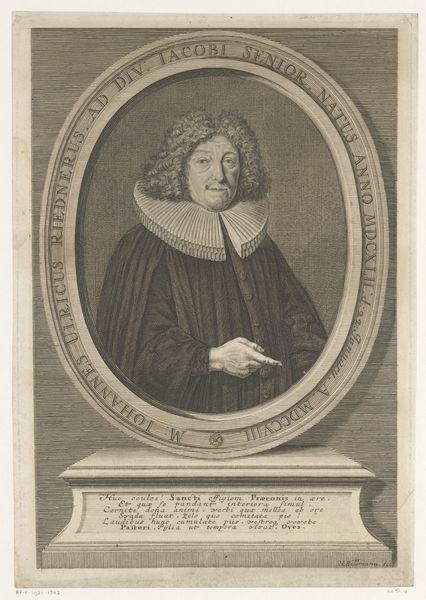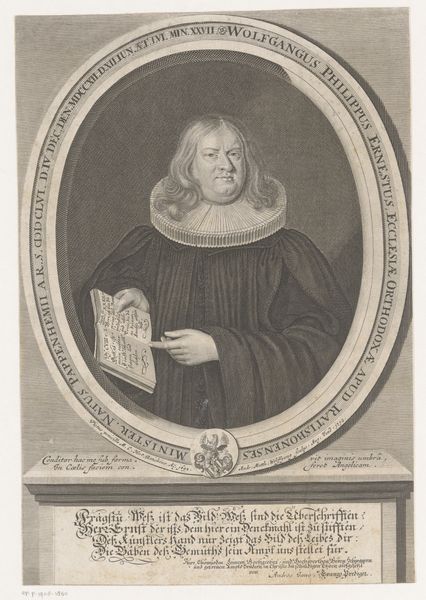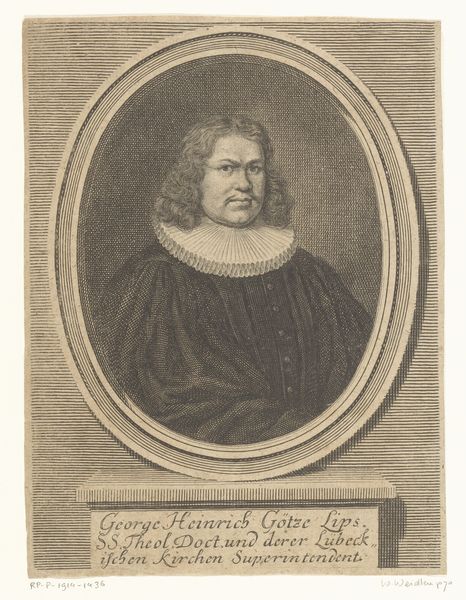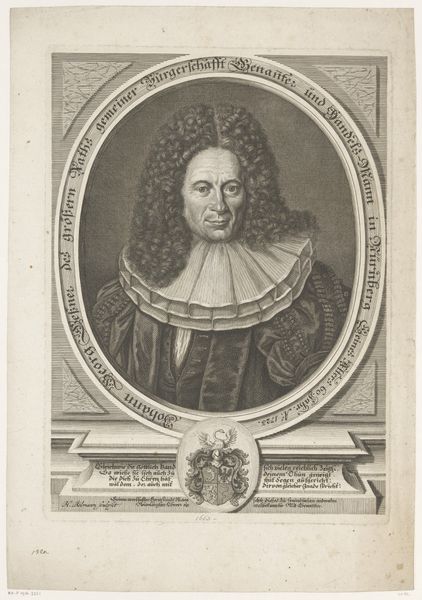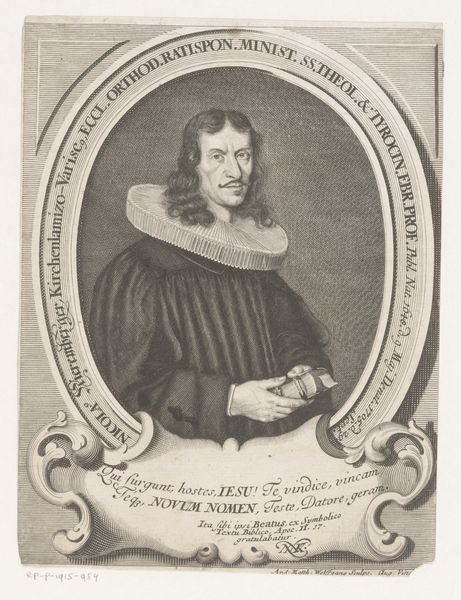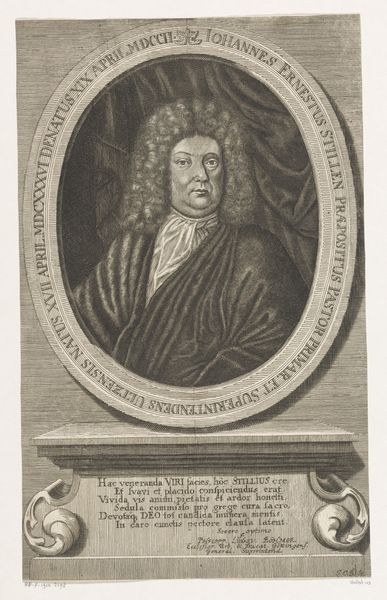
#
aged paper
#
photo restoration
#
old engraving style
#
historical photography
#
old-timey
#
framed image
#
19th century
#
golden font
#
historical font
#
columned text
Dimensions: height 268 mm, width 189 mm
Copyright: Rijks Museum: Open Domain
Curator: Here we have "Portret van Andreas Jahn," crafted in 1697 by Andreas Matthäus Wolfgang. What are your first thoughts? Editor: It’s immediately striking—the starkness of the engraving gives it a rather somber air, despite the intricate detailing in the lettering and ornamentation surrounding the portrait. The materials look well-worn. You can almost feel the texture of the aged paper. Curator: Indeed. Let's delve into the context. Jahn, as identified by the text framing the image, held significance within his community. It’s also worth noting the religious undertones—the title "Auxiliator Iesus", which reveals aspects of identity formation intertwined with theological doctrine of the time. Editor: Right. I'm interested in the production of this image. It's an engraving, suggesting a process involving considerable labor and skill in manipulating materials. The fine lines and the contrasts of light and shadow were the results of meticulous craftwork. Who was producing works like this and for what social purposes? It speaks volumes about material dissemination of status during this period. Curator: Precisely, and that labor becomes tied to power. The very act of commissioning a portrait, especially one as elaborate as this, was a declaration of status and an engagement with systems of patronage. Moreover, portraits functioned ideologically to maintain class distinctions in society, and to cement notions of what could or could not be acceptable for those belonging to this individual's faith. Editor: I agree, the visual rhetoric communicates the value and importance of this figure—not merely through likeness, but through material articulation and means. Curator: This piece serves as a powerful reminder of the layered intersections of religion, society, and selfhood, as well as the deliberate construction of public identity. Editor: And how a seemingly simple material—paper, ink, and skilled hand—can serve as an eloquent communicator of so much historical and cultural weight.
Comments
No comments
Be the first to comment and join the conversation on the ultimate creative platform.
